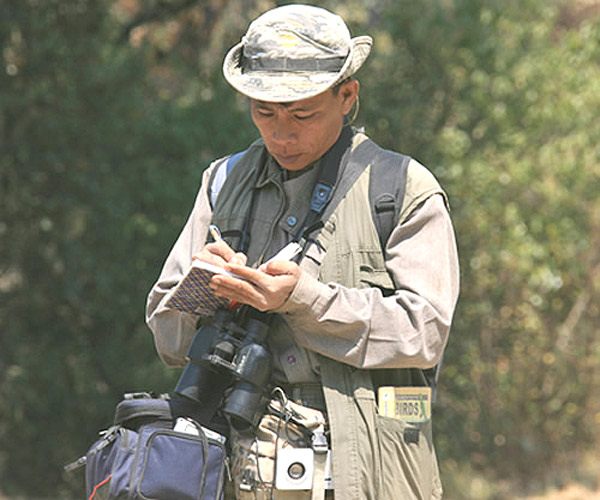In collaboration with international and local conservation organisations, Burmese ornithologists conducted an extensive survey on Burma’s bird species from 2010 to 2014. DVB interviews a leading ornithologist from the Wildlife Conservation Society, Thet Zaw Naing.
Q: How many bird species are there in Burma according to the study’s findings?
A: The study listed 1,114 bird species in Burma, including both existing and new species.
Q: We learned that the study revealed new bird species, with some possibly endangered. Could you elaborate?
A: There were no endangered species, but we found about 20 new species previously not listed native to Burma, therefore they do not have Burmese names. These new species include the one we call Theinsar (Eagle-sparrow), a sparrow-sized eagle-looking bird with black and white stripes. There are also water bird species including a larger version of a red-necked seagull and a Ngatpasat (Mouth bird) around the size of a Greater Coucal.
Q: In which parts of the world have these species been previously identified?
A: The miniature eagles are known to be inhabitants of India, usually on the Himalayas mountain range, and some Southeast Asian countries.
Q: Which organisations contributed to the survey? And where was it conducted?
A: The survey covered extensively across Burma with contributions by the government’s Environment and Wildlife Conservation Department, international organisations such as the Wildlife Conservation Society, and Fauna and Flora International, as well as local group Myanmar Bird and Nature Society, and other bird enthusiasts. We have compiled all the data from their individual surveys and identified the new species that emerged in Burma.
Q: Compared to the previous year, is Burma’s bird population on the rise? Has there been any extinction of bird species?
A: No extinctions have been recorded, but we concluded that the bird populations are on a decline. We have found the numbers of water bird populations in the country declining, from our yearly winter surveys that are conducted in collaboration with international groups. However, this is not only happening specifically in Burma, but also in other native countries.
Q: Did you identify any bird species that were thought to be extinct? If so, which species?
A: There is a Pink-headed Duck that we have assumed to be resident in Burma for the past 10 years. However, unsuccessful attempts by different organisations and individuals to identify it in recent years have led us to assume its extinction – not only in Burma but in the entire world. Meanwhile, peacocks are also becoming a rarity. While they are not critically endangered, they are likely to go extinct within the next 30 years unless conservation efforts are made. Another five or six species that will face extinction in 15 years’ time include three vulture species. The White belly heron – estimated about only 250 left around the world – is also becoming a rarity in Burma.
Q: What are the main contributing factors to the decline of bird populations in Burma?
A: The main challenges are hunting – not for food but trade – and the loss of natural habitats. A bad practice is to use pesticides or insecticides for hunting.
[related]
Q: Can you explain how development projects lead to the loss of habitats?
A: We have yet to do a study on this, but most of these development projects are located far from areas where rare bird species can be found. Nonetheless, it should be noted that developmental work, such as construction of fishponds or farmland in wetland areas, can hamper the reproduction rate of water birds.
Q: Can you tell us what can be done to protect them from extinction?
A: I’d like to say that all types of flora and fauna, not only birds, can directly or indirectly benefit humans. As we are also reliant upon their existence, we should in return protect them by not destroying their natural habitats.



